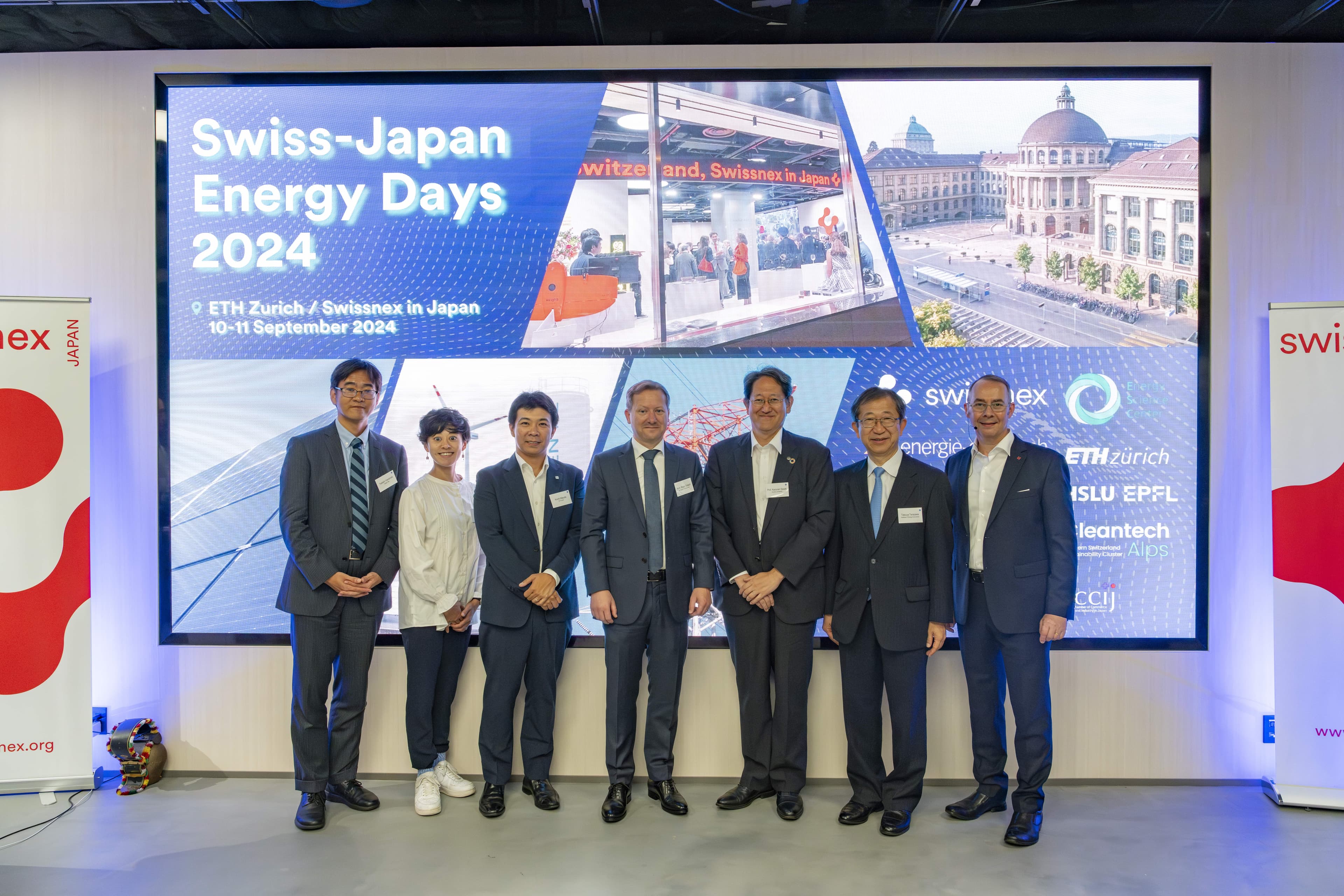On September 10th, the Swiss Chamber of Commerce and Industry in Japan hosted an insightful presentation by Ms. Annette Bossler, Owner and Managing Director of Main(e) International Consulting LLC. Specializing in international market intelligence and business development, Bossler shared her expertise on offshore wind development in Japan. Her talk explored the interplay between international developments and Japan's offshore wind market, highlighting how each influences the other.
Global Significance of Offshore Wind
Bossler began by outlining the global significance of offshore wind energy, emphasizing its key advantages:
- Scalability for investing green hydrogen and ammonia production
- Reliability of wind resources
- Proximity to demand centers
- Stable costs
- Job creation
She noted that offshore wind is thriving in regions like the UK, Norway, and USA, where abundant wind resources, supportive policies, and well-established market infrastructure create an ideal environment for growth.
Japan's Offshore Wind Ambitions
Shifting focus to Japan, Bossler emphasized the pivotal role of government policy in advancing offshore wind energy. Japan's ambitious targets and regulations are now driving the industry forward, as declared in the "Vision for Offshore Wind Power Industry" plan released in 2020. This plan sets specific goals to boost offshore wind capacity to 10 gigawatts (GW) by 2030 and between 30 and 45 GW by 2040. These goals align with Japan's broader aim to achieve carbon neutrality by 2050 although meeting 10GW by 2030 may be challenging due to inflationary pressures.

Japan's Offshore Wind Potential
Bossler highlighted Japan's significant potential for offshore wind energy, particularly in floating wind technology. Citing a study by Matsui et al. (2020), she noted that Japan has a capacity to generate 608GW from offshore wind, thanks to its vast Exclusive Economic Zone (EEZ) and the concentration of its population and energy demand along the coastline.
Moreover, she remarked that offshore wind has demonstrated greater resilience against typhoons and earthquakes compared to onshore alternatives, making it one of the most desirable renewable energy sources for Japan.
Challenges Facing Japan's Offshore Wind Development
In addition to inflationary pressures, Bossler identified several other challenges facing Japan's offshore wind development.
1.Geographical Characteristics: Japan's deep coastal waters and slow wind speeds necessitate more complex and costly floating wind turbines.
2.Extreme Weather: Frequent typhoons demand turbines capable of withstanding extreme conditions, increasing costs and technical difficulties.
3.Lack of Infrastructure and Expertise: Unlike regions with established oil and gas sectors, Japan has limited domestic experience to draw upon for developing and maintaining offshore wind infrastructure.
4.Regulatory Hurdles: Japan's late start in establishing a comprehensive regulatory framework has led to delays. Recent amendments to the auction assessment process, while improving bid quality and fairness, have further slowed progress.
5.Community Support: Gaining support from local communities, especially fishermen, remains a significant challenge.
6.Limited Development Area: While Japan's EEZ offers vast potential, development has focused on territorial waters due to geopolitical and regulatory concerns, limiting project scale.
Opportunities for International Collaboration and Innovation
As Japan looks to expand its offshore wind capacity, significant investment in port infrastructure particularly, along the Pacific coast will be necessary, presenting opportunities for foreign companies specializing in port design, engineering, and equipment supply. Moreover, as an early leader in developing wind turbines, Japan can contribute to global development with its extensive dada and expertise of building wind turbines that can withstand harsh environments.
Bossler concluded that Japan's offshore wind journey exemplifies the complex balance between ambitious renewable energy goals and real-world challenges. While geographical constraints pose significant hurdles, they also drive innovation in floating wind technology and extreme weather-resistant turbines, potentially giving Japan an advantage in these areas.
Success in this sector requires not only policy advancements but also robust domestic and international industry collaborations. Offshore wind energy as a cornerstone of global energy transition, it is going to be interesting to see how global cooperation and synergy will take this journey forward.
Sources
Vision for Offshore Wind Power Industry- Ministry of Environment





